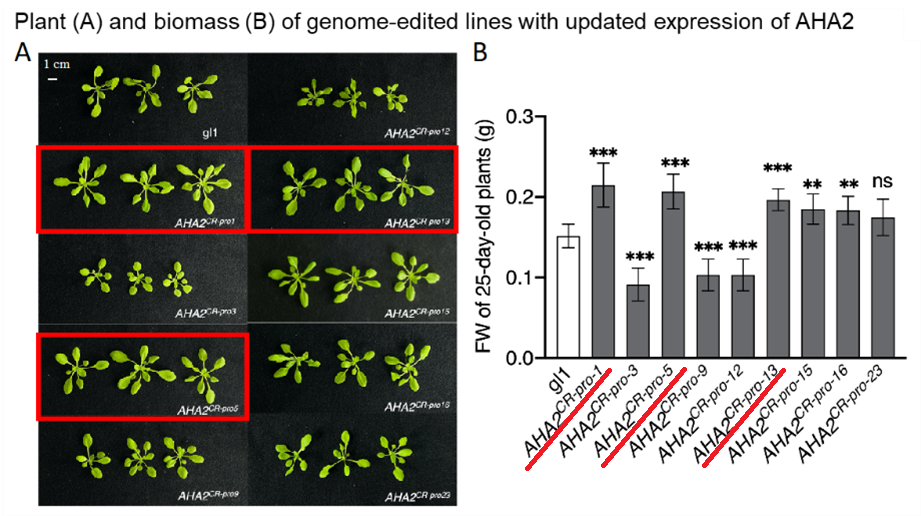Advantages
- This high-yielding plant is expected to yield as much as a regular fertilizer application, even with half the amount of nitrogen source fertilizer applied.
- It also contributes to CO2 reduction by promoting photosynthesis.
- Stomatal opening mechanism is common in plants and can be applied to many horticultural crops and biofuel plants.
Technology Overview & Background
Methods to enhance plant growth and yield are expected to contribute not only to solving the food crisis, but also to reducing the amount of fertilizer applied, which reduces carbon dioxide emissions and causes environmental pollution. Enhanced photosynthetic activity is necessary to increase growth and yield in plants, and it is important to control the stomata that take carbon dioxide, the carbon source, into the plant body. It is known that stomata are opened by signaling triggered by the reception of blue light.
The inventors have identified a stomatal opening mechanism in which activation of the plasma membrane proton pump in pore cells causes hyperpolarization, which in turn causes water (H2O) to flow into the cell, resulting in the swelling of the pore cells. The inventors demonstrated that when Arabidopsis and poplar plants genetically modified to highly express plasma membrane proton pumps in the pore cells were grown, stomatal opening was promoted, photosynthetic activity increased, and yields increased( https://doi.org/10.1073/pnas.1305438111, https://doi.org/10.3389/fpls.2021.766037). We also demonstrated that systemically increasing the expression of plasma membrane proton pumps in rice plants increases stomatal opening and photosynthetic activity in leaves and nutrient absorption in roots, leading to higher yields in field plots (https://doi.org/10.1038/s41467-021-20964-4). However, what was created at that time was a transgenic plant, and there were hurdles to its practical application. The inventor attempted to create a genome-edited crop that increased gene expression by genome editing of the promoter region of the plasma membrane proton pump AHA2 gene of Arabidopsis thaliana. We identified the promoter region of the AHA2 gene and succeeded in producing an Arabidopsis line with increased expression of the AHA2 gene using gRNA targeting the desired site. The stomatal opening and nutrient absorption mechanism by the plasma membrane proton pump is a common mechanism in plants, and this technology is expected to be used in various practical crops to increase yields.
Data
- Genome editing mutations in conserved regions of Arabidopsis promoters (9 lines) enhanced expression of the proton pump gene AHA2 in leaves and roots in 3 lines (red lines in right figure), increasing stomatal opening, photosynthetic activity, nutrient absorption activity and biomass.
- Seed yield increased by more than 35%.
 |
Patents
Patent pending (not yet published).
Principal Investigator & Academic Institution
Prof. Toshinori Kinoshita (The Institute of Transformative Bio-Molecules, Nagoya University)
Expectations
We are looking for companies interested in joint development of high-yielding varieties and lines of lettuce, tomato, rice, wheat, and other crop species and biomass plants using this technology. We envision a joint research project with a theme for each of the above crop varieties.
Project.WL-04299


